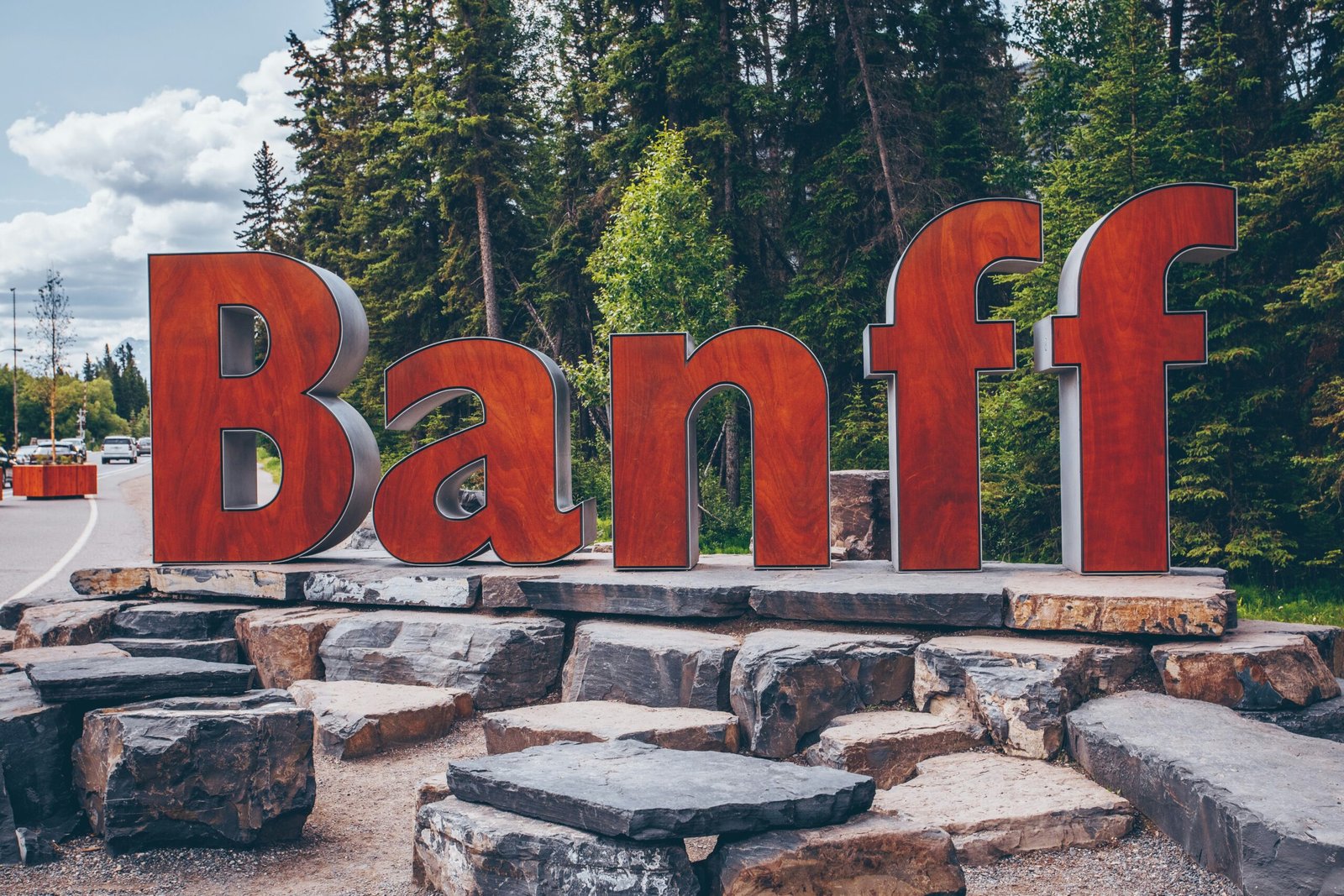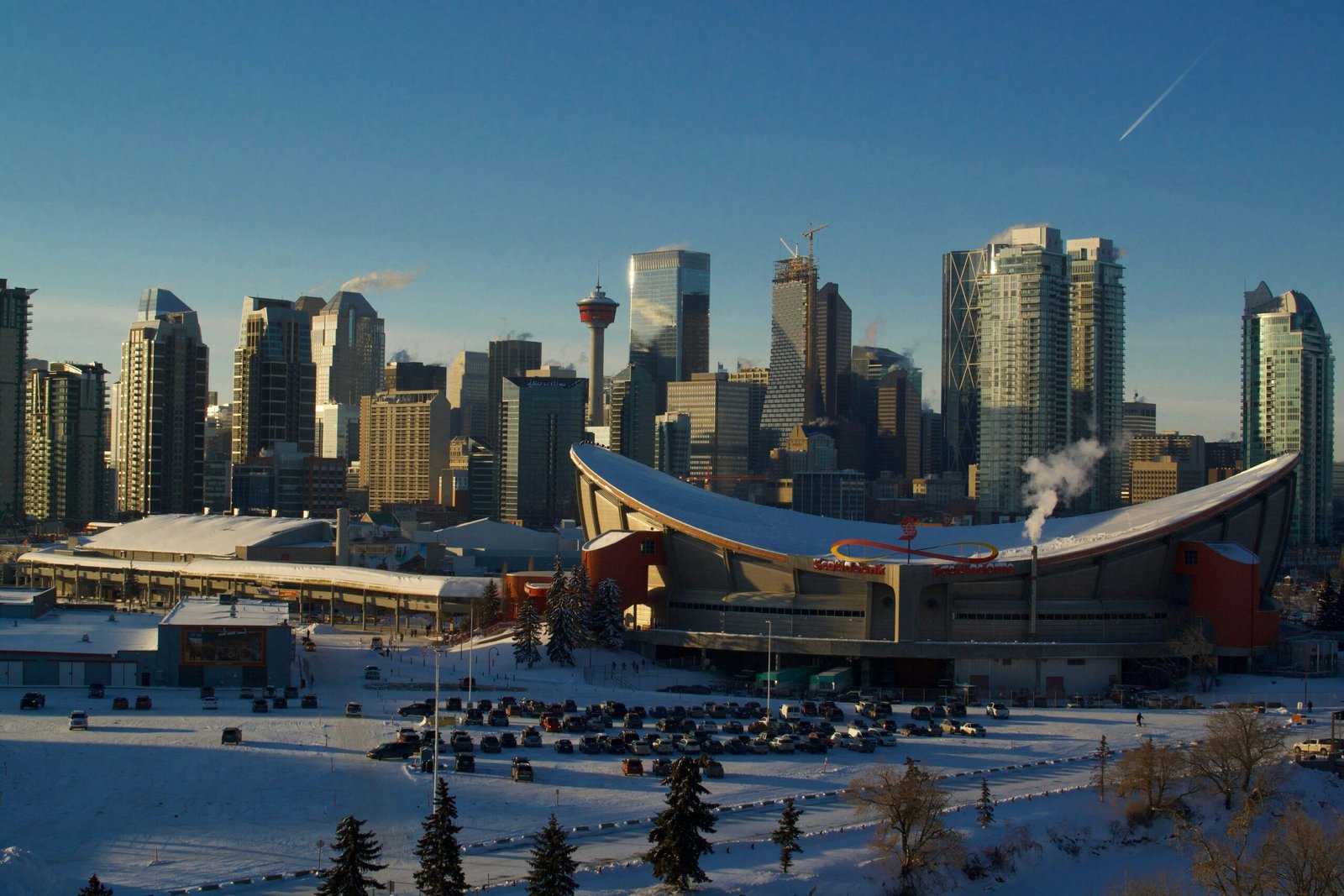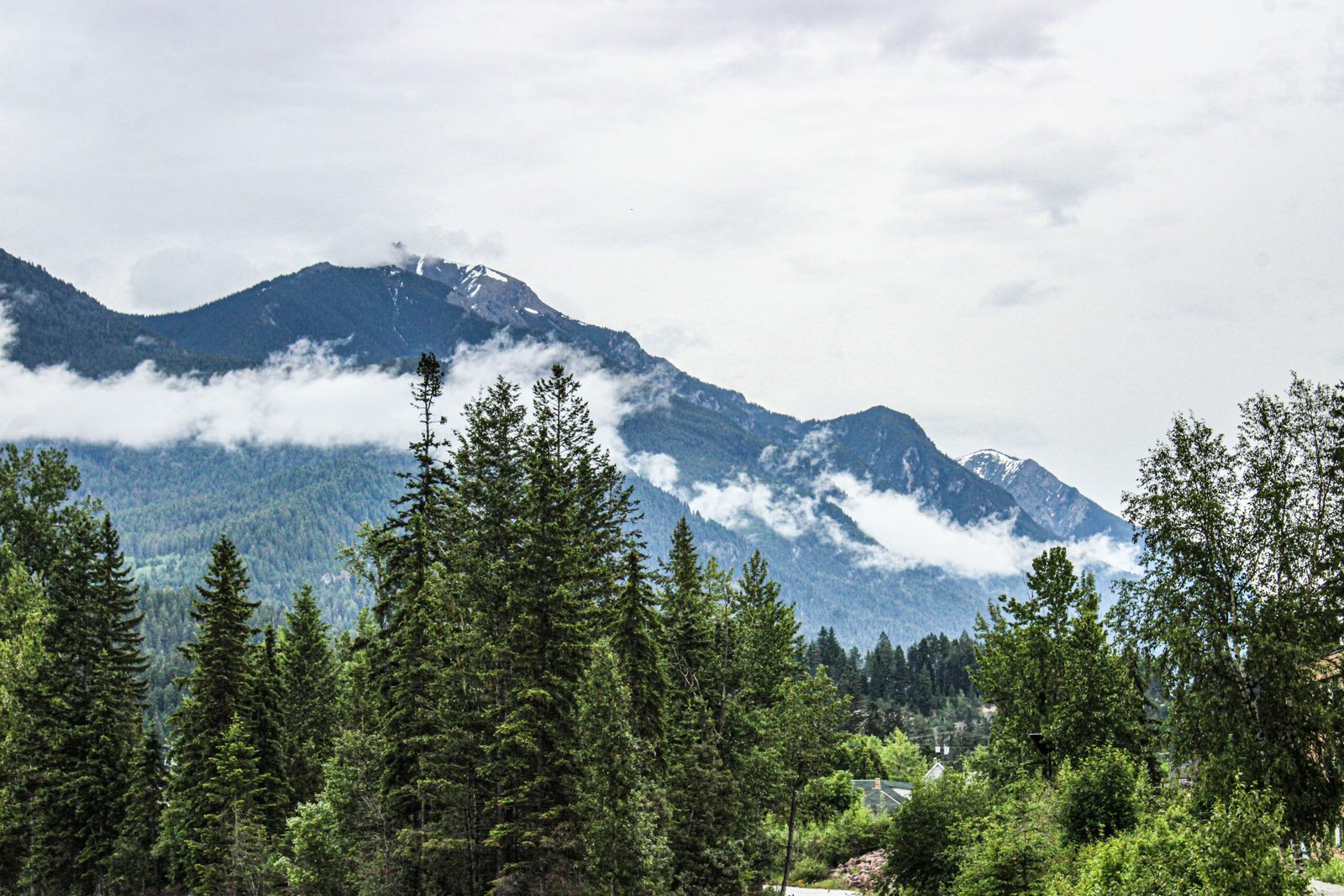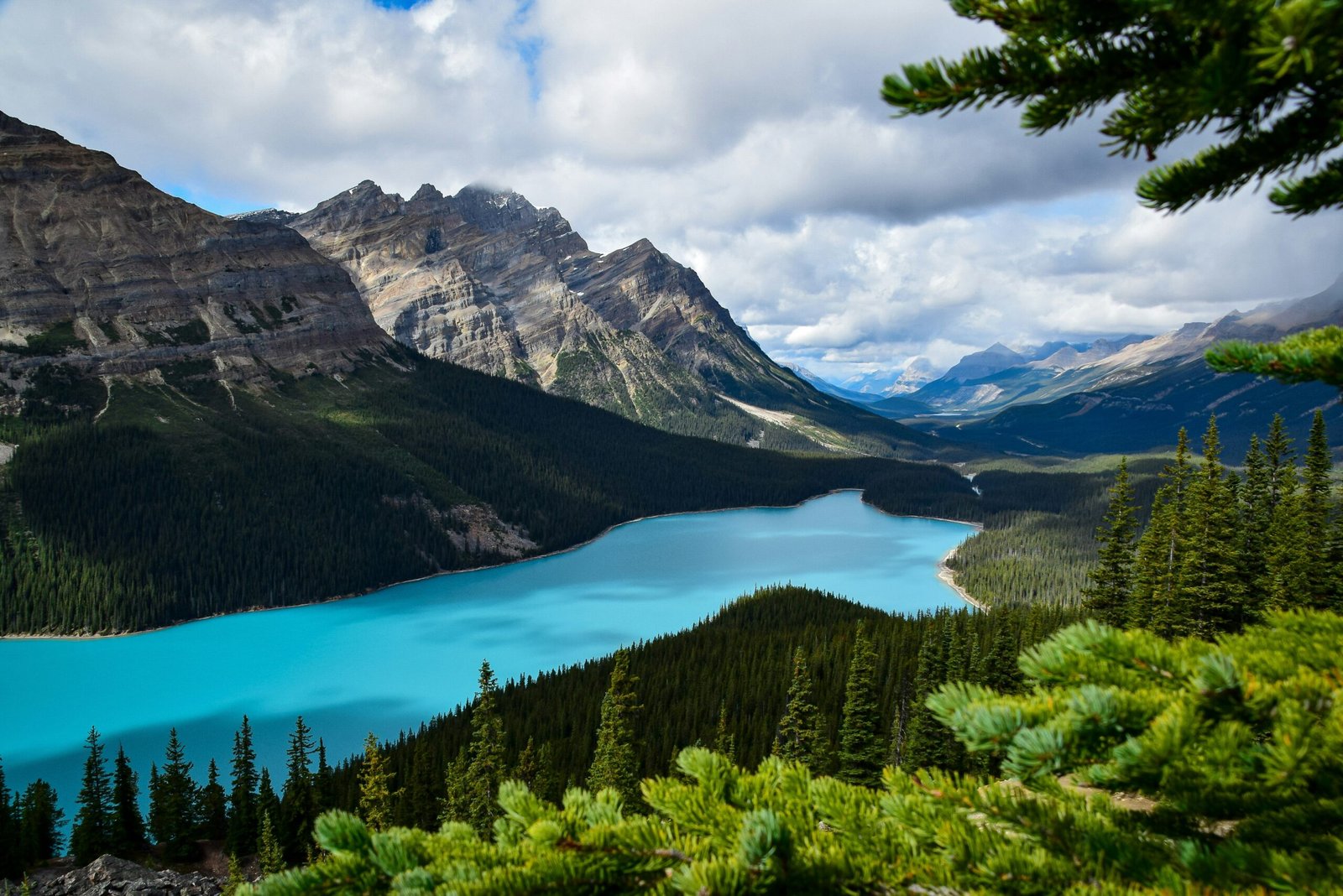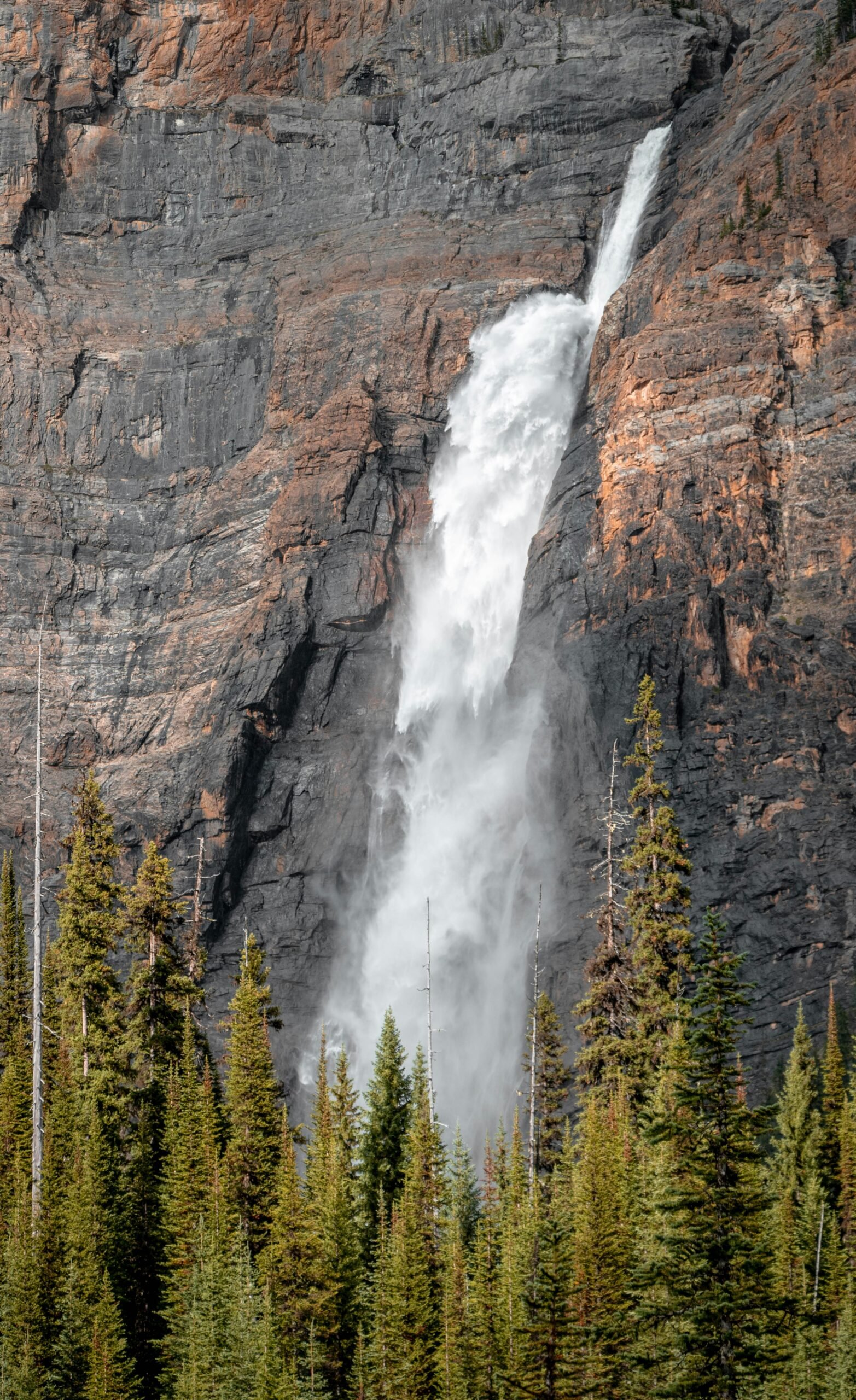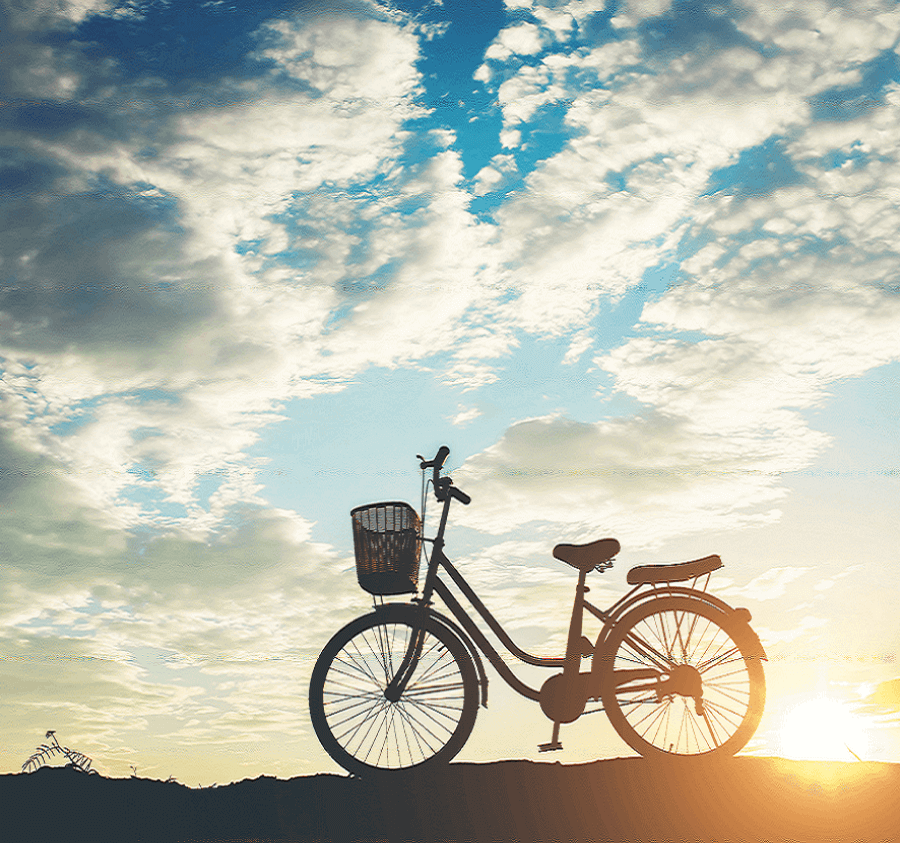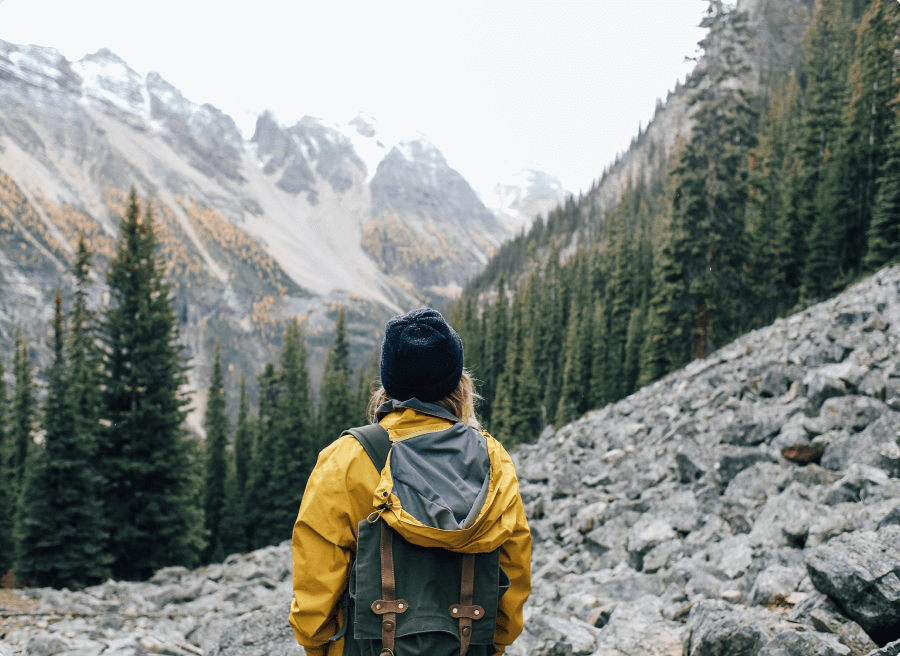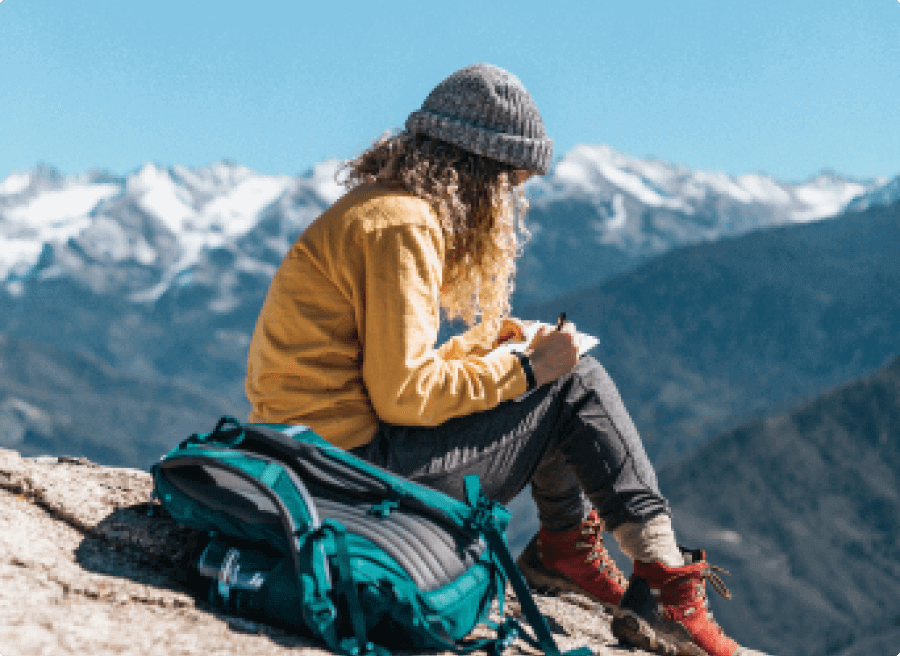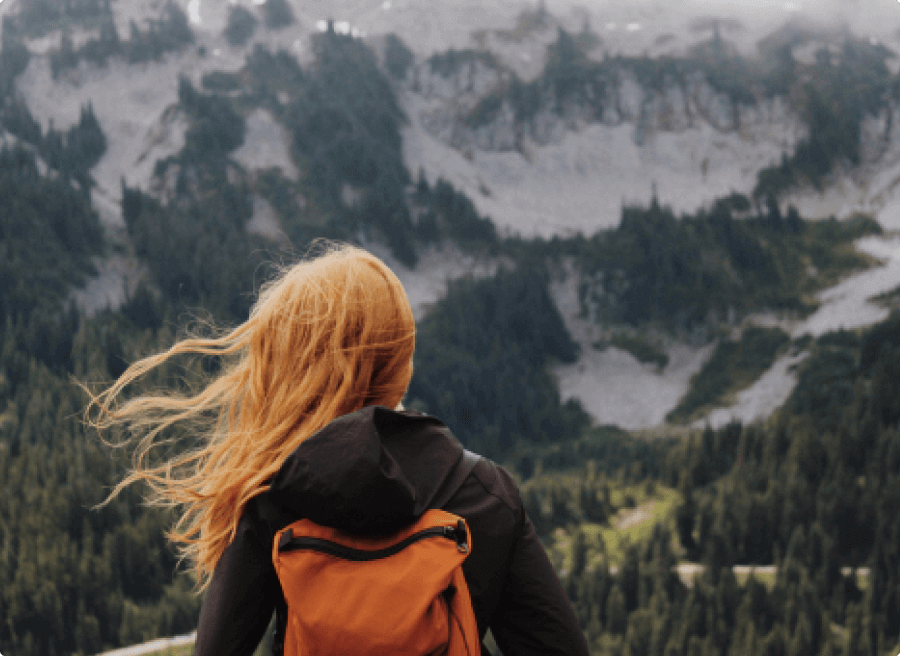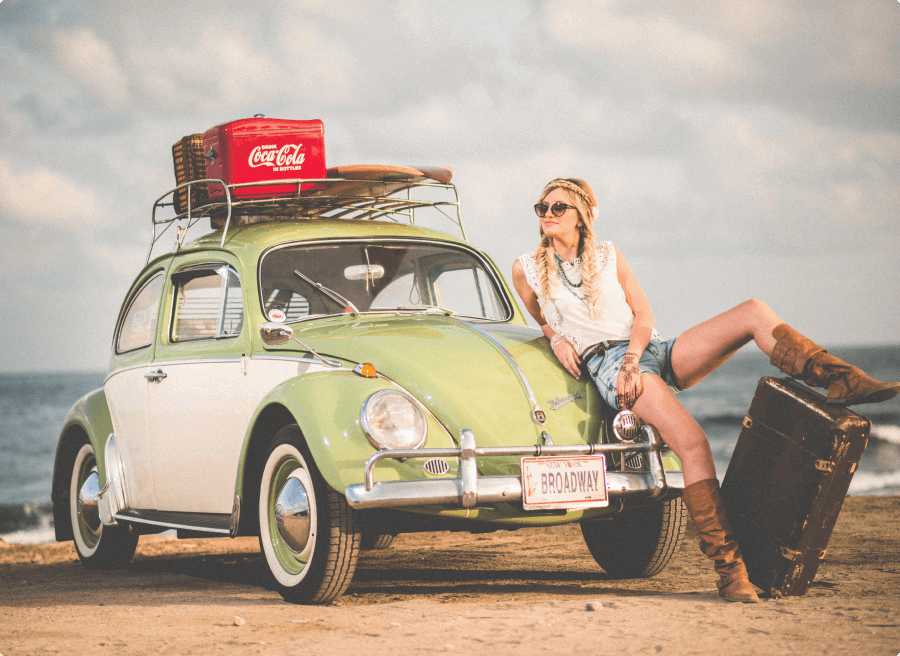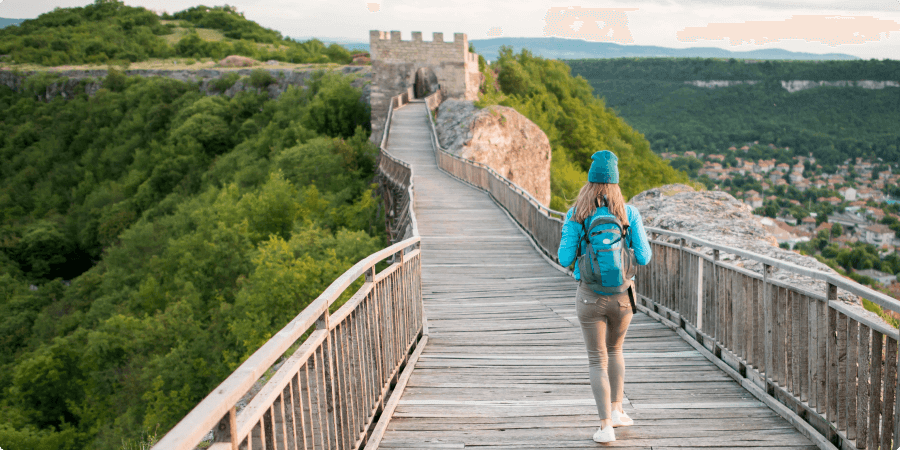When the world turns white, Banff transforms into a winter paradise straight out of a fairytale. Nestled in Alberta’s legendary Rockies, Banff in Winter is both vibrant and serene, where adrenaline-fuelled adventure coexists with a soothing relaxation retreat. Skiers rush down powdery slopes, snowshoers wander into deep pine forests, and all visitors marvel at the otherworldly beauty of frozen lakes and snow-capped peaks. If the cold is what keeps you away from Canada’s mightiest mountains, now is the time to embrace it—the experience is as invigorating as it is unforgettable.

Banff’s Winter Personality: Charm, Snow, and Community
Downtown Banff is enchanting during the winter months. The busy summer crowds melt away, replaced by travellers drawn to winter’s quiet magic. Banff Avenue shines under festive lights; Cascade Mountain towers above, while Bear Street boasts new pedestrian zones, local art, cosy cafés, and more than 100 restaurants serving anything from poutine to wild game and fresh vegan fare.
The Essential Climate Guide: Understanding the Cold
Banff’s winter runs from November through March, and temperatures get seriously cold. Daytime highs typically stay between -5°C and -15°C (23°F to 5°F) and, when the sun goes down, the mercury can drop well below -20°C (–4°F) —sometimes even colder during Arctic snaps.
Why does anyone come here in winter? It’s about the snow. The air is pristine and dry, and the region boasts some of the most reliable, light powder in North America. Sunshine sparkles off crystalline snowfields and mountain peaks, making Banff one of the world’s prettiest winter landscapes.
Safety tip: The cold in Banff is rarely damp or bone-chilling, but it does demand preparation. Plan for changing conditions, as winter weather in the Rockies can shift fast.
How to Dress for the Perfect Banff Winter
Locals know that layering is the art of winter comfort. Start with thermal base layers next to your skin, add breathable wool or fleece for insulation, and finish with a weatherproof shell made for snow and wind. Invest in a quality down jacket, waterproof pants, and sturdy boots rated for subzero temperatures.
Accessories are essential: Bring a toque (that’s a Canadian winter hat), thick gloves or mittens, warm socks, neck gaiters, and sunglasses—the snow can glare like the midday sun. If you’re hiking or snowshoeing, ice cleats or micro-spikes are crucial for icy trails. For kids, bright colors help with visibility during snow play.
Remember: You can rent winter gear in Banff, including boots, snowshoes, and outerwear. Local outfitters like Snowtips Bactrax make it easy, and staff are happy to help with advice and fit.
Pro Clothing Tips:
– Avoid cotton, which traps moisture and chills the skin.
– Choose wool or technical fabrics for warmth and breathability.
– Dress for the coldest possible conditions; mountain weather changes quickly.
Eating for Energy: Best Foods for Winter Wellness
Adventure means burning calories—and cold, dry air takes even more out of you. Banff’s food scene is built for replenishing energy: hearty soups and stews, local Alberta beef, bison, and root veggies fill menus across the region. Whole grains (oatmeal, brown bread, wild rice) help sustain you throughout the day, and hydrating is crucial—drink lots of water, hot chocolate, and herbal teas.
For a quick lunch, indulge in local favourites like elk chilli, game sausages, and creamy vegetable soups at casual spots. For dinner, book a table at Bear Street Tavern or Sky Bistro atop Sulphur Mountain for gourmet comfort food in a room with a view. Vegetarians will find warming lentil stews, grain bowls, and roasted veggies at eateries like Nourish and The Maple Leaf.
Food Safety & Tips:
– Embrace hot drinks—brief stops for tea or cocoa warm hands and spirits.
– Opt for smaller, energy-boosting snacks when ski touring or snowshoeing: trail mix, granola, and dark chocolate.
– Avoid alcohol and caffeine before strenuous activity in cold weather—they can contribute to dehydration.
Must-Do Winter Activities in Banff
Banff’s appeal in winter centers on three things: skiing, snowshoeing, and the legendary hot springs retreat. But the full list is much longer.
1. Skiing and Snowboarding the Big 3 Resorts
Three world-class ski resorts anchor the Banff winter experience: Sunshine Village, Lake Louise, and Mt. Norquay.
Banff Sunshine Village
Located on the Continental Divide, Sunshine offers more than 3,300 acres of skiable terrain across three mountains. The snow is famously dry and powdery, and high-speed lifts mean you’ll spend less time waiting and more time on the slopes.
Trails range from beginner-friendly greens to double-black diamond off-piste descents. For the daredevils, free ride terrain is both exhilarating and strictly for experts—with safety gear mandatory. Rent gear and arrange lessons at the Ski Big 3 Adventure Hub for seamless experiences.
Lake Louise Ski Resort
With stunning views of Victoria Glacier and the famous frozen lake, Lake Louise is as photogenic as it is fun. Wide groomers, long runs, and seriously impressive powder make for blissful days, and terrain parks keep freestyle lovers engaged. For something truly special, combine a morning ski with an afternoon skate on the frozen lake—rental facilities offer all equipment.
Mt. Norquay
Closer to town, Norquay is beloved for its family-friendly vibe, excellent night skiing, and affordable tubing park. Ski schools offer top-notch instruction, so it’s ideal for first-time skiers and younger families.
How Much Time Should You Plan for Skiing?Enthusiasts spend anywhere from a half-day to several full days exploring Banff’s resorts. A Ski Big 3 Pass lets you hop between all three, and shuttles connect each resort with downtown Banff.
Safety Tips:
– Always check avalanche warnings before heading off-piste.
– Wear a helmet, and don’t ski alone in expert terrain.
– Make sure your ski travel insurance covers winter sports.
2. Snowshoeing: The Quiet Adventure
Snowshoeing is Banff’s secret treasure. Just strap on a pair and float across untouched powder—no experience required.
Favourite trails include Tunnel Mountain, Marble Canyon, Johnson Lake, and the easy trek to Paint Pots. Guided tours are fun for families and solo travellers alike, offering equipment, local knowledge, and tips for mastering the snow.
Beginner Routes:
– Marble Canyon: Gentle, scenic, and kid-friendly. Frozen waterfalls and bridge crossings await.
– Lake Louise Lakeshore: Apres-ski snowshoe excursions among pine trees and ice sculptures.
Gear & Time Needed:
Tours typically last 2–3 hours; self-guided adventures can be shorter or longer depending on pace and weather.
Safety Tips:
– Stay on marked trails—deep snow hides hazards and avalanche terrain.
– Dress warmly; bring extra socks and gloves. Carry a map, phone, and water.
3. Retreat to Banff’s Legendary Hot Springs

When muscles ache and toes chill, nothing beats soaking in Banff Upper Hot Springs. This outdoor pool features naturally warmed mineral water (kept near 37–40°C) and stunning views of snow-laden trees and majestic peaks. Go at dusk for magical pink skies or after a day of skiing for the ultimate apres-adventure.
Sessions last 1–2 hours, but the benefits linger: relaxation, rejuvenation, and a sense of wellness in every breath.
4. Ice Skating on Frozen Lakes:
Gliding across Lake Louise’s frozen, glassy surface is a must-do Banff activity. The Fairmont Chateau maintains the rink daily, so skates are always sharp and the ice smooth. Not a skater? No problem—just walk across the frozen lake or admire the surrounding mountains. Ice sculptures and occasional festivals enliven the scene, and rental facilities make participation easy for everyone
5. Epic Winter Hikes:
The breathtaking winter hikes in Banff are safe and easily accessible. Trails like the Johnston Canyon Ice Walk allow hikers to enjoy many frozen waterfalls, frost-covered pines, and even turquoise streams. Micro-spikes or ice cleats are essential for safety. Other famous hikes include Tunnel Mountain, Sundance Canyon, and Sulphur Mountain whose gondola takes hikers for breathtaking rides to dine at the summit.
6. Winter Festivals and Local Culture :
Festivals, live music, and ancestral storytelling events make the winter season in Banff vibrant and lively.
● SnowDays Festival (Jan 17-Feb 2, 2025): Ice sculptures and live skijoring performances on Bear Street where dogs pull skiers and horses in exciting cross-country races.
● Nightrise at Banff gondola: Indigenous collaborational light exhibitions on Sulphur Mountain for show-stopping archaio-astronomy light experiences at night.
Stay Updated: Check local tourism and Canada Parks-Banff National Park for events in the area, weather, and trail closures.
7. Dog Sledding, Tubing, and Non-Ski Fun
Banff is not just for skiers. Tubing at Norquay or Lake Louise offers high-speed thrills for all ages—no experience required. Dog sledding tours let visitors meet sled dogs and race through snowy landscapes. Fat biking, tobogganing, and snowboarding add variety to winter days. Safety Tips:
● Reserve with well-known outfitting companies for relevant bookings and gear.
● Dress in warm garments that are also weather proof, specifically for windy and snowy conditions.
8. Exploring Banff’s Historic Sights and Museums
The first ever park in Canada, Banff National Park, has fascinating museums that depict rich history of wildlife and nature, along with stories regarding the preservation of the land and Indigenous peoples. Visit Whyte Museum, Cave & Basin historic site, and Banff Park Museum for rich context on local culture and the evolution of mountain life.
Where to Stay:
Cosy Lodges and Gorgeous Hotels Banff offers something for every traveller, from luxury hotels to rustic hostels.
Recommendations: – Fairmont Banff Springs: on-site spa, “Castle in the Rockies,” grand and historic. – Moose Hotel & Suites: central location, modern comfort, and rooftop pools. – Hostelling International Banff: set in the forest and social on a budget. Fill your winter months with fascinating festivals and skiing, but make sure to reserve in advance.
What every traveler needs: packing essentials – winter layering (thermal, fleece, shell, weather resistant) – warm insulated boots and wool socks – winter hat, sunscreen, sunglasses, and gloves (protection needed from winter sun) – micro spikes or ice cleats for walking – ski and snowboard gear for days at the resort – swimsuit for hot springs – refillable water bottle – camera or smartphone (the views are incredible) – trail snacks, energy bars – daypack for day trips.
Staying Safe: Winter in the Mountains Banff during wintertime has their very own unique set of rules. Enjoy and remember them for your time in Banff. – Avoid skiing and hiking alone, especially in wintertime. Travel, or leave the trails, on your own at your own risk. – Check the avalanche advisories for the day. Off-trail with proper gear and training is never advisable. – Carry the ’10 essentials’. These consist of a map & compass, water & food, a first aid kit, flashlight & fire starter, multi tool, insulation & sun protection. Plus, and an emergency shelter. – Ski and hike in groups. Finish and pay attention to the weather and lower your core temperature. Frostbite and hypothermia are very real and can happen in a split second.
Watch for wildlife but keep your distance—never approach animals. – Inform someone where you’re going and when you’ll be back. Banff’s Latest News and Updates—2025 Banff’s winter wonderland is more accessible than ever. Major infrastructure improvements mean easier shuttles to ski resorts and attractions. Moraine Lake remains closed to personal vehicles in winter—use local tours or shuttles for access. Parks Canada is introducing new interpretive programs in collaboration with indigenous communities for deeper cultural experiences. Bear Street’s revitalisation has given travellers more pedestrian zones, outdoor art, and food festivals into the winter months. Be aware that some remote trails close temporarily due to snow, avalanche risk, or wildlife movement, but the main attractions (Lake Louise, Norquay, Sunshine Village, downtown Banff) are reliably open and buzzing.
Conclusion: Why Winter in Banff Should Be Prioritized For Travel Plans
Banff in winter is truly a one of a kind destination if you’re in search of mesmerizing landscapes, adventure, and a little relaxation. The Rockies never disappoint. Whether you’re slicing down iconic steep black diamonds, crafting snowshoes and making fresh tracks in the fluffy powder fields, or soaking in the steaming mineral spring under a snowfall, there is something for everyone. Travel here is about more than just relishing the cold air, it’s about embracing winter. With proper snacking, balanced meals, and following the principles of safety, the unyielding stories get etched into your mind. Embrace winter, go to Banff, and get a taste of a winter experience that is unparalleled. Visit these majestic mountain, and rekindle that childlike fascination. Winter here is not just a season, it is an experience.
